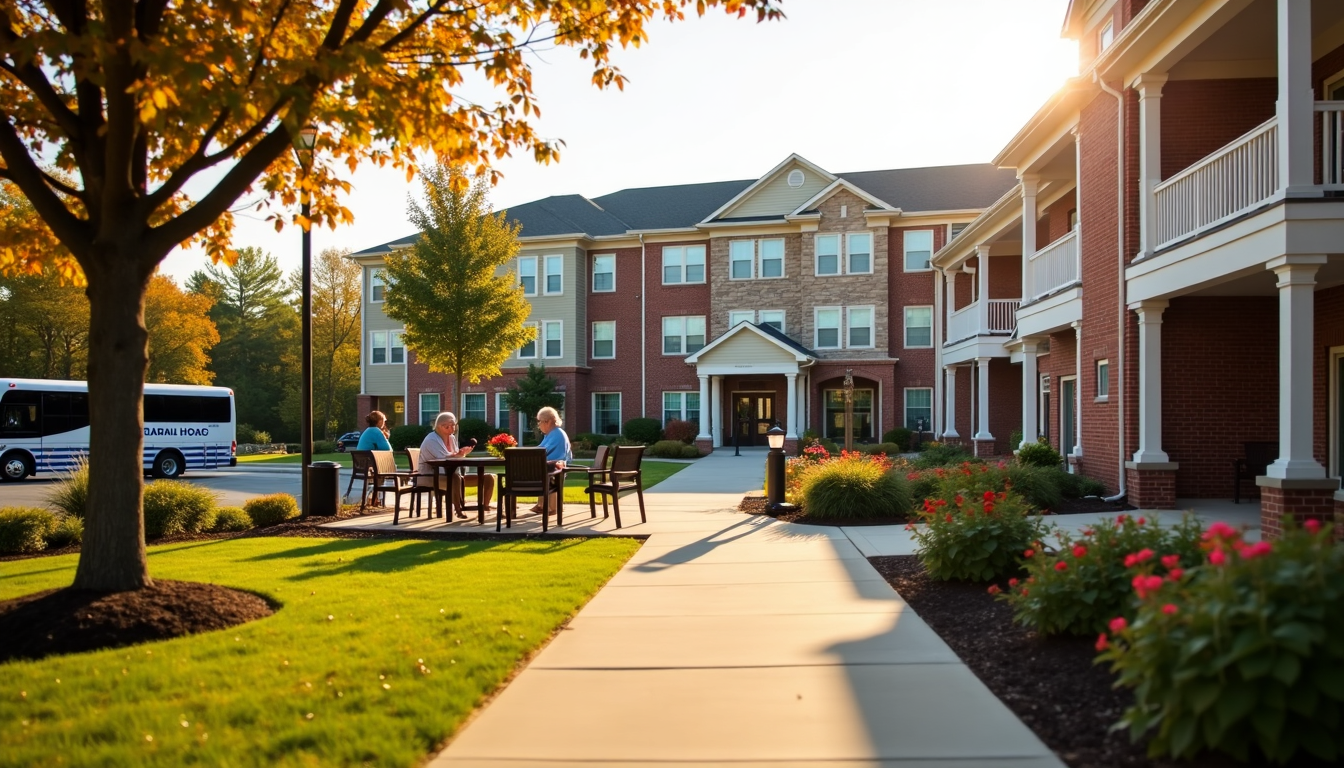As seniors consider transitioning to assisted living, creating a comprehensive senior budget becomes crucial. This financial planning process helps ensure a smooth move and comfortable living arrangement. Proper budgeting allows seniors to manage their resources effectively, taking into account their pensions, investments, and other income sources.
The following guide outlines key steps to create a senior budget for assisted living. It covers assessing current finances, researching facility costs, developing a detailed spending plan, and exploring financial assistance options. By following this roadmap, seniors and their families can make informed decisions about this important life change while maintaining financial stability.
Assess Your Current Financial Situation
The first step in creating a senior budget for assisted living is to evaluate one’s current financial standing. This process involves a thorough examination of income sources, expenses, assets, and debts. By gaining a clear understanding of their financial landscape, seniors can make informed decisions about their future living arrangements.
Calculate Total Income
To begin, seniors should calculate their total income from all sources. This includes:
• Social Security benefits • Pensions • Retirement account distributions • Investment income • Rental income (if applicable)
It’s important to note that up to 85% of Social Security income could be subject to federal income taxes, depending on the individual’s total income and tax filing status. Seniors should consider consulting a tax professional to understand how their income might be taxed and explore strategies to minimize their tax burden.
List All Expenses
Next, seniors should create a comprehensive list of their current expenses. This should include:
• Housing costs (mortgage or rent, property taxes, insurance) • Utilities • Food and groceries • Healthcare expenses (insurance premiums, medications, doctor visits) • Transportation costs • Personal care items • Entertainment and leisure activities
By categorizing expenses, seniors can identify areas where they might be able to cut back or redirect funds towards their assisted living budget.
Evaluate Assets and Debts
The final step in assessing one’s financial situation is to take stock of all assets and liabilities. Assets may include:
• Savings accounts • Retirement accounts (401(k)s, IRAs) • Investments (stocks, bonds, mutual funds) • Real estate • Valuable personal property
Liabilities to consider include:
• Mortgage balance • Credit card debt • Personal loans • Medical debt
Understanding the balance between assets and liabilities helps seniors determine their net worth and identify potential sources of funds for assisted living expenses.
By thoroughly assessing their current financial situation, seniors can create a realistic budget for assisted living. This process also helps identify any gaps in their financial planning and allows them to explore options for maximizing their resources. With a clear picture of their finances, seniors can make informed decisions about which assisted living communities they can afford and what level of care they can comfortably maintain in the long term.
Research Assisted Living Costs
After assessing their financial situation, seniors should thoroughly research the costs associated with assisted living facilities. This step is crucial for creating an accurate senior budget and making informed decisions about their future living arrangements.
Compare Different Facilities
The cost of assisted living can vary significantly depending on location, amenities, and services offered. According to recent data, the national median cost for assisted living is approximately USD 4500.00 per month. However, prices can range from USD 2800.00 to USD 6050.00 per month, depending on the state and specific community.
When comparing facilities, seniors should consider the following factors:
• Location: Urban areas and coastal regions tend to have higher costs. • Size of living space: Larger apartments or suites may come with a higher price tag. • Amenities: Luxury or resort-style facilities often charge more for their services. • Level of care needed: More extensive assistance with daily tasks can increase costs.
It’s essential to visit multiple communities and request detailed pricing information to make accurate comparisons. Some facilities may offer shared apartments or suites for couples, which can be more cost-effective than two separate residences.
Understand Fee Structures
Assisted living facilities typically use one of three main fee structures:
- All-Inclusive Model: This structure groups most services into a single monthly bill, including rent, meals, housekeeping, and personal care. While it offers simplicity and predictability, the definition of “all-inclusive” may vary between facilities.
- Levels of Care Model: Also known as Tiered Pricing, this model groups services into 3-4 levels or tiers. Each tier allows for a certain number of care hours per month. Residents are assessed upon move-in and periodically thereafter to determine their appropriate level of care.
- Fee-for-Service Model: In this structure, residents pay a base fee for rent and meals, with additional charges for each service provided. While this model aligns fees closely with services used, it can lead to unpredictable monthly costs.
When evaluating fee structures, seniors should ask for a clear breakdown of what is included in the base rate and what services incur additional charges. It’s also important to understand how often care needs are reassessed and how changes in care levels might affect monthly costs.
Factor in Additional Services
Many assisted living facilities charge extra for services beyond basic care. These additional costs can significantly impact a senior’s budget and should be carefully considered. Some common additional services include:
• Medication management • Transportation to medical appointments or social activities • Specialized meal plans or dietary restrictions • Personal care supplies and hygiene products • On-site medical services or access to healthcare professionals
Seniors should also be aware of potential one-time fees, such as community fees or deposits, which can range from USD 1000.00 to USD 5000.00. These fees are often non-refundable and may be used to prepare the living unit for a new resident.
By thoroughly researching assisted living costs and understanding the various fee structures and additional services, seniors can create a more accurate budget for their transition to assisted living. This knowledge will help them make informed decisions about which communities best fit their financial situation and care needs.
Create a Detailed Budget
After researching assisted living costs, the next crucial step is to create a detailed budget. This process involves carefully allocating funds to cover essential expenses, planning for healthcare costs, and including personal spending money. A well-structured budget helps seniors manage their finances effectively and ensures a comfortable transition to assisted living.
Allocate Funds for Essential Expenses
When creating a senior budget for assisted living, it’s important to prioritize essential expenses. These typically include:
• Monthly fees for the assisted living facility • Utilities (if not included in the monthly fee) • Food and dining services • Personal care items • Transportation costs • Insurance premiums
Start by listing all monthly expenses and categorize them based on importance. This approach allows seniors to allocate funds appropriately and identify areas where they might need to adjust their spending. For example, if regular medical care and personal assistance are critical, it may be necessary to allocate more of the budget to these areas.
To reduce costs, consider options like shared apartments, which can significantly lower housing expenses. Additionally, some communities offer early payment discounts or incentives for paying a larger portion of the cost upfront. It’s worth exploring these options to maximize the budget.
Plan for Healthcare Costs
Healthcare expenses are a significant consideration when budgeting for senior living. As individuals age, their healthcare needs may increase, which can result in additional costs. To plan effectively:
• Research Medicare and Medicaid coverage options • Consider purchasing supplemental insurance to cover gaps in coverage • Factor in out-of-pocket expenses for medications, co-pays, and deductibles • Set aside funds for potential medical emergencies or changes in care needs
It’s crucial to understand that Medicare typically doesn’t cover long-term care expenses, so it’s essential to plan for these costs separately. Some seniors may benefit from long-term care insurance to help cover assisted living expenses.
Include Personal Spending Money
While essential expenses and healthcare costs are primary concerns, it’s important not to overlook personal spending money in the budget. This allocation allows seniors to maintain their quality of life and enjoy recreational activities. Consider budgeting for:
• Entertainment and leisure activities • Hobbies and personal interests • Gifts for family and friends • Personal grooming services • Occasional dining out or special treats
By including personal spending money in the budget, seniors can maintain a sense of independence and continue enjoying activities that bring them joy. However, it’s important to balance these expenses with essential costs to ensure financial stability.
Creating a detailed budget for assisted living requires careful consideration of various factors. By allocating funds for essential expenses, planning for healthcare costs, and including personal spending money, seniors can create a comprehensive financial plan that supports their needs and desires in their new living arrangement. Regular review and adjustment of the budget will help ensure long-term financial stability and a comfortable lifestyle in assisted living.
Explore Financial Assistance Options
When creating a senior budget for assisted living, it’s crucial to explore various financial assistance options. These can significantly reduce the financial burden and make assisted living more affordable for seniors.
Look into Long-Term Care Insurance
Long-term care insurance is a valuable resource that can help cover the costs of assisted living. These policies are designed to provide support when seniors need assistance with activities of daily living, such as bathing or dressing. Many long-term care insurance plans offer comprehensive coverage that includes assisted living facilities.
The best time to purchase a long-term care insurance policy is typically before age 65. It’s essential to buy the policy well in advance of when you think you’ll need it. However, it’s important to note that long-term care insurance may not be suitable for everyone. Eligibility depends on factors such as age, health history, and current health status. Some health conditions may prevent an individual from qualifying for coverage.
When considering long-term care insurance, it’s crucial to understand the policy’s limitations and exclusions. Some policies may have restrictions on the types of services covered or the conditions that qualify for benefits. It’s advisable to carefully review the terms and consult with an insurance professional to ensure the policy aligns with your specific needs and financial planning goals.
Research Government Benefits
Government programs can provide significant financial assistance for seniors considering assisted living. Medicaid, for instance, is a valuable resource for low-income seniors. While Medicaid coverage varies by state, many states offer Home and Community Based Services (HCBS) waivers that can help cover the costs of assisted living as an alternative to nursing home care.
Veterans and their surviving spouses may be eligible for benefits through the Department of Veterans Affairs (VA). The Aid and Attendance benefit, for example, can provide financial assistance to veterans who require help with activities of daily living. This benefit can be used to offset the costs of assisted living.
Additionally, some states offer their own assistance programs for seniors. These may include financial aid for assisted living, adult day care services, or home modifications. It’s important to research the specific programs available in your state and understand their eligibility requirements and application processes.
Consider Family Support
Family support can play a crucial role in financial planning for assisted living. In many cases, adult children or other relatives may contribute to the cost of care. This can be done through direct financial contributions or by helping to manage the senior’s assets and investments.
When considering family support, it’s important to have open and honest discussions about financial expectations and capabilities. Creating a clear plan for how family members will contribute can help avoid misunderstandings and ensure a stable financial foundation for the senior’s care.
Some families may also explore options such as pooling resources or setting up a shared caregiving fund. This approach can help distribute the financial responsibility among multiple family members and provide a more sustainable long-term solution.
By exploring these financial assistance options, seniors can create a more comprehensive and sustainable budget for assisted living. It’s important to consider all available resources and create a plan that balances the senior’s care needs with their financial capabilities.
Conclusion
Creating a senior budget for assisted living has a significant impact on ensuring a smooth transition and comfortable living arrangement for seniors. By carefully assessing their financial situation, researching costs, and developing a detailed spending plan, seniors can make informed decisions about their future care. This process allows them to manage their resources effectively and explore various financial assistance options to support their new lifestyle.
To sum up, a well-crafted budget serves as a roadmap to financial stability in assisted living. It helps seniors maintain their quality of life while addressing essential needs and healthcare costs. By taking these steps and staying flexible to adjust their budget as needed, seniors can approach this new chapter with confidence and peace of mind.
FAQs
- What are affordable housing options for seniors?
- Low-Income Senior Apartments and Condos offer a feasible solution for seniors looking for affordable living spaces. These facilities are designed specifically for low-income seniors, allowing them to pay no more than 30 percent of their adjusted gross income for private living spaces.
- How do most people finance assisted living?
- The majority of individuals and families cover the costs of assisted living through personal savings or bank accounts, commonly referred to as private pay.
- What are some tips for elderly individuals adjusting to life in assisted living?
- To adapt to assisted living, elderly individuals can engage in several activities:
- Introduce themselves to neighbors.
- Get to know the community caregivers and staff.
- Spend quality time with family and friends.
- Participate in community events and activities.
- Share meals with other residents and staff members.
- To adapt to assisted living, elderly individuals can engage in several activities:
- What are some effective strategies for downsizing when moving to assisted living?
- Here are several downsizing tips for those transitioning to assisted living:
- Develop a detailed plan.
- Address financial matters.
- Sort through belongings one room at a time.
- Make decisions about sentimental items.
- Organize a yard sale or donate items that are no longer needed.
- Ensure important documents are accessible.
- Clearly label boxes according to their designated rooms in the new living space.
- Here are several downsizing tips for those transitioning to assisted living:












